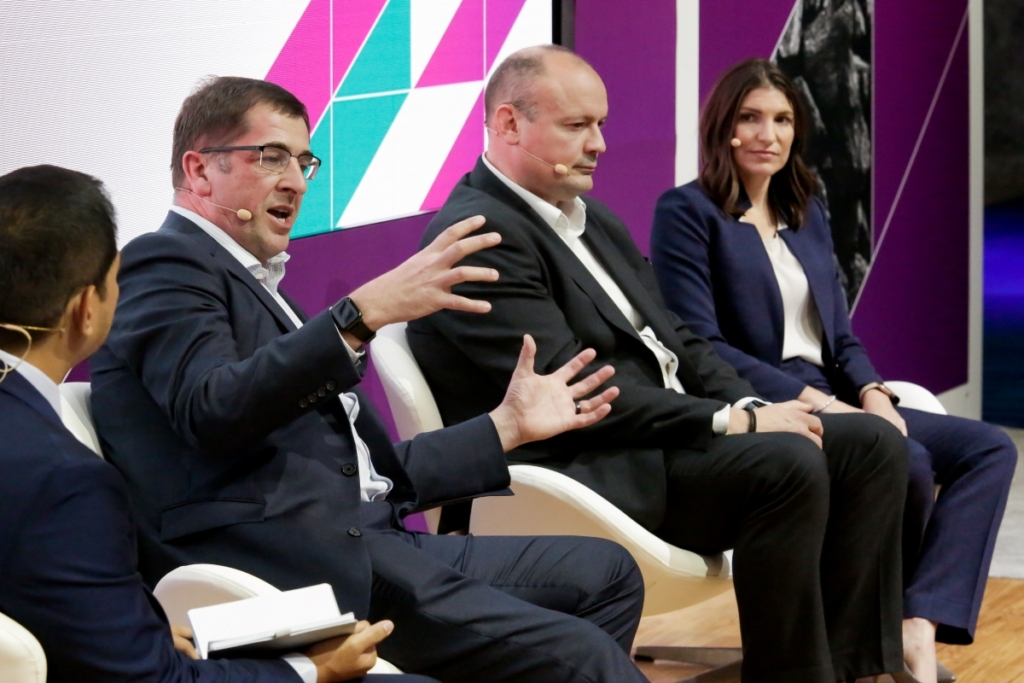Steve Milward (8 Rivers), Dan Carter (Wood), Robin Fielder (Talos Energy)
Recognition is growing that carbon capture, utilization and storage (CCUS) will play an increasingly significant role in the fight against climate change. The IEA calls for a nearly 30-fold increase in global CO2 capture capacity by 2030 for the world to stay on track to meet the Paris Agreement target of no more than 1.5°C of warming. This is a huge challenge, one that the world cannot meet with a business-as-usual approach.
This message is starting to resonate among key decision-makers and energy-system stakeholders, including players sitting on existing fossil generating capacity whose pathway to renewables adoption remains murky. At 8 Rivers, we have been laser-focused on finding solutions for this cohort that will allow them to cost-effectively capture CO2 from their energy production.
The centerpiece of these efforts thus far is the Allam-Fetvedt Cycle (AFC), an innovation 8 Rivers invented in 2010. In simple terms, the AFC produces water and pure CO2 during the generation of electricity from carbon-based fuels—virtually any hydrocarbon, including natural gas, biomass, and municipal solid waste. Vitally, it can be cheaper per unit of electricity generated than traditional combustion without carbon capture. This flips the traditional economics of CCUS on its head—making capture a smarter bet than it has ever been—and is now being built onto power projects in the UK and US.
Policy and partnerships
Yet innovative technology alone will not be enough to scale CCUS to where it needs to get to. At CERAWeek, I appeared on an expert panel alongside Dan Carter of Wood, an energy consultancy, and Robin Fielder of Talos Energy, which develops CCUS projects. The key message was that partnerships—between policymakers, emitters, CO2 capture technology innovators and implementers, pipeline and transport operators, and storage developers and managers—will be crucial in order to unearth the efficiencies needed to make CCUS economically viable.
To see all of Steve comments on his panel at CERAWeek 2023, check out the video below.
Fortunately, the groundwork for such partnerships is coming together quickly. Start with policy support: the incentive framework for CCUS has never been stronger, especially in the US, where the Inflation Reduction Act increased the tax credit for carbon capture with permanent storage to $85 per metric ton. This applies to any project that breaks ground by end-2032, providing a long runway and nearly a decade of certainty.
Still, build-out of industrial infrastructure is often an excruciatingly slow process, meaning that ten years can go by in the blink of an eye. For this reason, Dan, Robin, and I agreed that speed is of the essence. We cannot let the perfect be the enemy of the good; we have to iterate quickly and learn from our mistakes. It took 8 Rivers a decade to develop and operationalize AFC, and we can’t spend another decade tinkering with technology. CO2 from energy production must be captured and put back underground today.
Leveraging existing infrastructure
This will take some outside-the-box thinking on business models, in particular a broader embrace of modularity and standardization. Each CCUS project cannot start from a blank slate. Developers need to work with technology licensors like 8 Rivers, who can deploy a kit that can be seamlessly fitted onto existing “gray” infrastructure. This helps negate the cost and headache of breaking ground on greenfield CCUS developments.
At the same time, governments need to reform their permitting process for storage. Long review timelines create uncertainty and risk failure for otherwise promising projects.
Final thoughts
Although it has a way to go before it will play a meaningful role in tackling climate change, the route forward for CCUS has never been clearer. Long-term policy incentives, mature capture technology, permitting reform, and strong alignment between stakeholders in the value chain will propel it from a niche aspect of the industrial landscape into a meaningful decarbonization lever.
